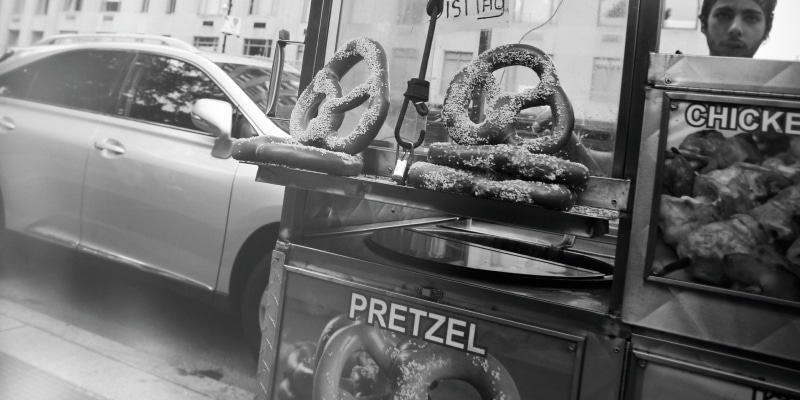Pray with Your Food

While you polish off the last of Thanksgiving leftovers and as the holiday fruit cakes start to stack, consider this: food and faith have long gone together like peas and carrots, like biscuits and gravy, like Cheetos and Mountain Dew (don’t judge).
Faith has many flavors, and many foods play roles in spiritual traditions or have religious origins. Here’s a taste of what’s on the menu.
![]()
In the Arms of the Pretzel
Lore has it Italian monks first fashioned these baked beauties to resemble arms folded in prayer, then doled them out to children as pretiola—little rewards for faithfulness. A simple recipe of flour and water made the pretzel fitting fare for Lent, when Christians were forbidden eggs and dairy products.
![]()
Waves of Butter Flow Like Gazelles
Lamps lit with ghee—clarified butter—in Hindu temples and homes are thought to purify the atmosphere. A caramel aroma wafts from the sacred substance, used historically in homa—fire sacrifices. An ancient hymn from the Rigveda sings its buttery praises.
This is the secret name of Butter:
“Tongue of the gods,” “navel of immortality.”
We will proclaim the name of Butter;
We will sustain it in this sacrifice by bowing low.
These waves of Butter flow like gazelles before the hunter…
Streams of Butter caress the burning wood.
![]()
The Incredible Symbolic Egg
Next we crack into the egg, savory sphere and symbol of rebirth that early Christians dyed red to resemble Christ’s blood. The breaking of the shell calls to mind the breaking open of the tomb after the Resurrection.
The egg has a place at the table in Jewish worship, too: served on the seder plate at Passover, it symbolizes sacrifices offered anciently at the temple in Jerusalem.
“Lord, let the grace of your blessing come upon these eggs, that they be healthful food for your faithful who eat them in thanksgiving for the resurrection of our Lord Jesus Christ.”
(The Roman Ritual, 1610)
![]()
Shintofu
You’re not the only one to appreciate good ‘fu, guy in the fleece vest. In Japan, abura-age (made from tofu) is said to be a favorite offering of Inari, kami of foxes and divine spirit to whom a third of the country’s Shinto shrines are dedicated.
![]()
Oh, Honey
Hungry yet? Nosh on this: apple slices dipped in honey represent hopes for a sweet new year during the Jewish celebration of Rosh Hashanah.
“May it be Your will, Lord our God and God of our ancestors,
that you renew us for a good and sweet year.”
(The Apples and Honey Prayer)
![]()
Shine Bright Like a Pomegranate
Also on the table for Rosh Hashanah is that other red delicious, the pomegranate. Its cache of juicy jewels reflects hope for a fruitful future.
“May our merits increase as the seeds of a pomegranate.”
(The Pomegranate Prayer)
![]()
Which Brings Us Up to Date
“A house without dates has no food,” said the Islamic prophet Muhammad, who ended fasts by eating a trio of the wrinkly fruits, thought to have purifying qualities. The tradition carries over today to Iftar, the Ramadan dinner where people end fasting together by downing three dates.



